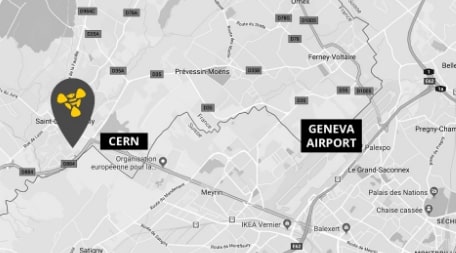Enhancing campus efficiency with Time-of-Flight people counting technology
People counting with Time-of-Flight (ToF) technology provides accurate data to monitor and analyze foot traffic. With Time-of-Flight technology universities can make data-driven decisions, streamline operations, and create a more conducive learning environment. This article looks at how implementing people counting with Time-of-Flight technology in universities and higher education facilities brings resource savings, efficiencies and improves user experience.

How does Time-of-Flight technology work?
With Time-of-Flight people counting technology, infrared sensors measure the time it takes for a light beam to bounce off an object and return to the sensor. This is used to measure the distance and movement of individuals in a given space. Time-of-Flight technology measures the distance between objects. It uses this information to determine the number of individuals passing through a specific area. Terabee people counters do not measure the height of the person coming into the area. Instead they relies on seeing points for head and shoulders to indicate a person has passed into or out of the area.
Time-of-Flight technology, a non-intrusive solution
Time-of-Flight technology is non-intrusive and doesn’t gather personal videos or photos, in contrast to cameras or other sensors that may capture identifiable information. With ToF sensors, no personal identifiable information (PII) is ever collected or stored. People can move through the monitored area without fear of being tracked or monitored. People Counting solutions from Terabee only gather anonymous data and are fully GDPR compliant by design.
Accurate foot traffic data
Reliable foot traffic data is essential for universities to optimize facility use. Time-of-Flight technology employs advanced sensors to capture real-time data on the number of people in a particular area. This enables administrators to obtain accurate footfall counts, identify peak hours, and understand space utilization patterns. With this information, institutions can make informed decisions about resource allocation, such as adjusting staffing levels, optimizing classroom usage, and improving space planning.

Space optimization for better use of resources
Universities may face challenges related to the amount of available space, especially in areas like libraries, study halls, and cafeterias. People counting which uses Time-of-Flight technology provides valuable data on occupancy rates, peak hours, and traffic patterns. Administrators can make informed decisions on space planning, facility layouts, to ensure optimal allocation of resources. By identifying underutilized spaces, campus managers can repurpose them for more productive activities.

Enhance energy efficiency
Improving energy consumption is a pressing concern for universities, to reduce their carbon footprint and lower operational costs. People counting systems based on ToF technology provide real-time occupancy data for rooms, lecture halls, and other facilities. This information enables informed decision-making and automated control of lighting, heating, and ventilation systems, via Building Management Systems, allowing universities to adjust energy use according to actual demand and significantly reduce waste.
Informed decision making
Time-of-Flight people counters generate a wealth of valuable data that can inform strategic decision making. By analyzing foot traffic patterns, universities can gain insights into student behavior, preferences and demand for facilities and services.
This data can be used to improve resource allocation, plan infrastructure developments, and make informed decisions about facility expansion or renovations. With data-driven decision making university campuses can align their operations and offerings with the evolving requirements of students and faculty.


Improve traffic flow and accessibility
Overcrowding in corridors, entries and parking lots can disrupt the daily operations of universities. By installing anonymous, non-invasive Time-of-Flight people counting systems, institutions can gain insights into traffic flow patterns and identify bottlenecks. This data helps administrators to optimize access and foot traffic fow. Students and staff can navigate the campus more efficiently, and improve their overall experience.
Better user experience
Students’ daily on-site experiences impact their perception of an institution. People counting with Time-of-Flight technology can help universities to create positive, productive learning environments. By identifying peak hours and crowded areas, universities can take measures to manage traffic flow and reduce congestion, thereby enhancing the overall student experience. This can mean adjusting class schedules, ensuring sufficient access to facilities, or improved navigation through campus.
Occupancy monitoring with Time-of-Flight technology brings significant benefits for universities and higher education facilities. Accurate foot traffic analysis, enhanced safety and security, improved space optimization, and a better student experience are just a few of the benefits. By harnessing the power of Time-of-Flight technology, institutions can leverage data-driven insights to streamline operations, create more efficient campuses, and provide an environment conducive to learning and growth.
Contact us to speak to an expert about your people counting challenges and requirements. Get in touch to find out more!
If you would like to learn how to deploy people counting solutions in your facility, whether it’s a campus or another type of building, contact a member of the Terabee team today.
Further reading
Stec, V. Herrmann and B. Stabernack, Using Time-of-Flight Sensors for People Counting Applications, 2019 Conference on Design and Architectures for Signal and Image Processing (DASIP), Montreal, QC, Canada, 2019, pp. 59-64, doi: 10.1109/DASIP48288.2019.9049169.
Shoaib Azizi, Gireesh Nair, Ramtin Rabiee, Thomas Olofsson, Application of Internet of Things in academic buildings for space use efficiency using occupancy and booking data, Building and Environment, Volume 186, 2020, 107355, ISSN 0360-1323. https://doi.org/10.1016/j.buildenv.2020.107355.
Giovanni Diraco, Alessandro Leone, Pietro Siciliano, People occupancy detection and profiling with 3D depth sensors for building energy management, Energy and Buildings, Volume 92, 2015, Pages 246-266, ISSN 0378-7788, https://doi.org/10.1016/j.enbuild.2015.01.043.











